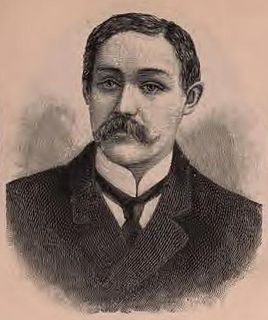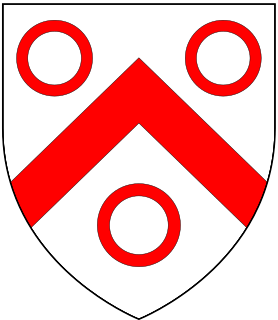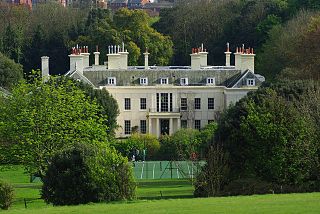
Earl of Selborne, in the County of Southampton, is a title in the Peerage of the United Kingdom. It was created in 1882 for the lawyer and Liberal politician Roundell Palmer, 1st Baron Selborne, along with the subsidiary title of Viscount Wolmer, of Blackmoor in the County of Southampton. He had already been made Baron Selborne, of Selborne in the County of Southampton, in 1872, also in the Peerage of the United Kingdom. Both his son, the second Earl, and grandson, the third Earl, were prominent Liberal Unionist politicians. The latter was in 1941 called to the House of Lords through a writ of acceleration in his father's barony of Selborne. The third Earl's grandson, the fourth Earl, served as one of the ninety elected hereditary peers that remain in the House of Lords after the passing of the House of Lords Act 1999, and sat as a Conservative. As of 2021, the titles are held by the latters son, the fifth earl, who succeeded his father in that year.

Baron Brassey of Apethorpe, of Apethorpe in the County of Northampton, is a title in the Peerage of the United Kingdom. It was created in 1938 for Sir Henry Brassey, 1st Baronet, who had previously represented Northamptonshire Northern and Peterborough in the House of Commons as a Conservative. He had already been created a Baronet, of Apethorpe in the County of Northampton, in 1922. Brassey was the second but eldest surviving son of Henry Brassey, third son of Thomas Brassey, and the nephew of Thomas Brassey, 1st Earl Brassey, and Albert Brassey. As of 2020 the titles are held by his great-grandson, the fourth Baron, who succeeded his father in 2015.

Samuel Hood, 2nd Baron Bridport, of Redlynch House in Wiltshire, of Cricket House at Cricket St Thomas in Somerset, and of 12 Wimpole Street in Westminster, was a British politician and peer.
The Williams, later Williams-Bulkeley Baronetcy, of Penrhyn in the County of Caernarvon, is a title in the Baronetage of England. It was created on 17 June 1661 for Griffith Williams. He had already been granted a baronetcy by Oliver Cromwell in 1658. The second Baronet represented both Caernarvonshire and Caernarvon in the House of Commons. The eighth Baronet sat as Member of Parliament for Beaumaris while the ninth Baronet represented Caernarvonshire and Beaumaris. The tenth Baronet was Member of Parliament for Beaumaris, Anglesey and Flint Burghs and served as Lord Lieutenant of Caernarvonshire. In 1826 he assumed by Royal licence the additional surname of Bulkeley on succeeding to the estates of Thomas James Bulkeley, 7th Viscount Bulkeley. The twelfth and thirteenth Baronets were both Lord Lieutenant of Anglesey while the latter was also Lord Lieutenant of Gwynedd. The family seat is Baron Hill, Anglesey. Arms of Williams of Penrhyn: Gules, a chevron ermine between three Saxon's heads in profile couped proper.

Henry Yarde Buller Lopes, 1st Baron Roborough, known as Sir Henry Lopes, 4th Baronet from 1908 to 1938, of Maristow in the parish of Tamerton Foliot, Devon, was a British Conservative Party politician.

There has been one creation of a baronetcy with the surname Dering. It became extinct on the death of the 12th Baronet Rupert Anthony Yea Dering who died on 16 March 1975.

The Barttelot Baronetcy, of Stopham in the County of West Sussex, is a title in the Baronetage of the United Kingdom.
The Baker, later Sherston-Baker Baronetcy, of Dunstable House in Richmond in the County of Surrey, is a title in the Baronetage of Great Britain. It was created on 14 May 1796 for Robert Baker, in honour of him raising and maintaining a cavalry regiment of 500 men styled "The Richmond Rangers" for King George III. He was succeeded by his son, the second Baronet. He was a vice-admiral in the Royal Navy. The fourth Baronet was a Recorder of Helston and of Barnstaple and Bideford and a County Court judge. The fifth Baronet assumed by deed poll the additional surname of Sherston in 1923. The Baker family was settled in the Westcountry several centuries before the creation of the baronetcy. A version of the arms used by the Baker baronets is displayed on the mural monument in Dunchideock Church in Devon of Aaron Baker (1620–1683) of Bowhay in the parish of Exminster, Devon, first President of the Madras Presidency.

The Smith, later Bromley, later Pauncefote-Bromley, later Bromley-Wilson, later Bromley Baronetcy, of East Stoke in the County of Nottingham, is a title in the Baronetage of Great Britain. It was created on 31 October 1757 for the banker George Smith, High Sheriff of Nottinghamshire from 1757 to 1759. He was the eldest son of Abel Smith I (1686–1756) of Nottingham, the 2nd son of Thomas Smith I (1631–1699), the founder of Smith's Bank in Nottingham. His younger brothers included: Abel Smith II (1717–1788) and John Smith, ancestor of Julian Pauncefote, 1st Baron Pauncefote.

The Wake Baronetcy, of Clevedon in the County of Somerset, is a title in the Baronetage of England. It was created on 5 December 1621 for Baldwin Wake. The sixth Baronet assumed the additional surname of Jones but died childless. The eighth Baronet sat as Member of Parliament for Bedford. The twelfth Baronet was High Sheriff of Northamptonshire in 1879. The thirteenth Baronet was a Major-General in the British Army. Another member of the family to gain distinction was Charles Wake, second son of the tenth Baronet; he was an Admiral in the Royal Navy.

There have been two baronetcies created for persons with the surname Goring, both in the Baronetage of England. The second creation came into the family through a special remainder in the patent creating the baronetcy. Only the latter creation is extant as of 2008.

The Dyke Baronetcy, of Horeham in the County of Sussex, is a title in the Baronetage of England. It was created on 3 March 1677 for Thomas Dyke, Commissioner of Public Accounts and Member of Parliament for Sussex and East Grinstead. The 2nd Baronet married Anne Hart, daughter and heiress of Percival Hart. In 1836 the 5th Baronet unsuccessfully claimed the barony of Braye, of which peerage he was a co-heir through the Hart family. The 7th Baronet was a successful Conservative politician. Percyvall Hart Dyke (1872–1952), grandson of Reverend Thomas Hart Dyke, second son of the 5th Baronet, was a Colonel in the Indian Army. His son Trevor Hart Dyke was a Brigadier in the Queen's Royal Regiment. David Hart Dyke, son of Reverend Eric Hart Dyke, son of the aforementioned Colonel Percyvall Hart Dyke, is a retired Captain in the Royal Navy and commanded HMS Coventry during the Falklands War. His daughter Miranda Hart is a well known writer, comedian, and actress.

Alexander Nelson Hood, 4th Viscount Bridport, 7th Duke of Bronté, is a British investment banker, resident in Geneva, Switzerland.

Compton Place is a mansion house in the parish of Eastbourne, East Sussex, England. It was rebuilt from 1726 by Sir Spencer Compton, to the design of the architect Colen Campbell, and was completed after Campbell's death by William Kent.

Sir Robert Bacon, 3rd Baronet of Redgrave (1574–1655) was an English politician.

Sir Edmund Bacon, 6th Baronet, of Garboldisham, Norfolk, was a British politician who sat in the House of Commons between 1710 and 1741.

Colonel Thomas Richard Beaumont of Bretton Hall, Wakefield, Yorkshire, was a British Tory politician and soldier.

Sir Thomas Dyke, 1st Baronet was an English Tory politician who sat in the House of Commons between 1685 and 1698.

Sir Alexander Hood, 2nd Baronet, was an English Conservative Party politician.

5, St James's Square is a Grade II* listed historic townhouse in London, England, built 1748–51 by William Wentworth, 2nd Earl of Strafford (1722–1791) to the design of Matthew Brettingham the Elder. It remained the London residence of the descendants of his sister until after 1968, and in 1984 was the site of the "Libyan Peoples' Bureau" from which shots were fired which caused the murder of Yvonne Fletcher.
















